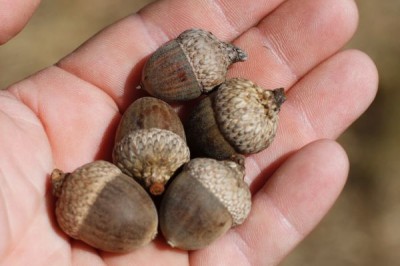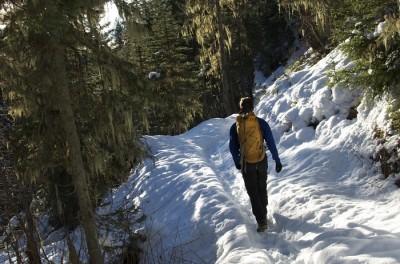|
Listen To The Article
|
Searching for food and living off the land in the winter may sound tough, and truth be told, it is. But it’s not impossible.
While it’s true that there is not the same variety of edible plants and animals available, you may be surprised to learn how much food can still be found deep in the winter forests and mountains. Dress warmly and read up; with winter in full swing, these sources of food will prove their value for both homesteading and in a true survival situation.
1. Acorns. Acorns are held in high regard among survivalists, and for good reason. There are few other edible foods in the wintertime that are as filled with as much nutrients and fat. Alternatives include hazel nuts, pecans, pine nuts and walnuts. The only downside to acorns is they can come with a bitter taste, but this will be remedied (somewhat) when set in hot water for a few minutes.
2.Clams. Hundreds of species of freshwater clams exist in North America. Not every lake or stream will have them, but it’s still worth it to run a protected hand along the bottom or the sides of a creek. When you find a clam, ALWAYS boil it before eating.
3. Fish. Nearly every kind of freshwater fish in the North American continent may be eaten. In water with no ice, you can use traditional fishing methods or a fishing net to gather groups of fish. There’s always ice fishing, although this endeavor should only be taken if you know what you’re doing. That being said, fish are some of the richest sources of protein available.
The Secret To Starting Fires In Even The Most Extreme Conditions
4. Small mammals. Sure, you may come across a deer, but more realistic options include snow hares and rabbits, or squirrels that venture out of their nests. Guns such as a .22 rifle or a .410 bore are good options to kill these creatures, as are setting traps and snares in areas with heavy game activity.
5. Oyster mushrooms. Oyster mushrooms are available, though not particularly common, all year round. They are found primarily on logs and dying trees. Since some mushrooms are very toxic for human consumption, avoid mushrooms entirely if you cannot identify them with absolute certainty. The oyster mushroom is known as such due to the cap that’s shaped like an oyster. This cap is smooth, shaped like a shell, and white. The stem of the oyster mushroom is very short if existent at all.
6. Pine needles. No, you can’t just eat raw pine needles as they are … well, you can, although that wouldn’t exactly be recommended. Instead, focus on boiling them and making tea from the needles, which are packed with vitamins A and C. This makes them nature’s remedies for a cold.
NOTE: Avoid needles from Ponderosa Pine Trees, as they are toxic. The good news is that there are many other varieties of pine trees in North America, but still make sure that you can discriminate between the different kinds to avoid anything harmful.
7. Watercress. We may be familiar with the watercress we can purchase at the grocery store down the street, but some claim that watercress in the wild actually tastes better. While it’s harder to find watercress if you look hard enough, you could find some growing together near watery areas.
What winter survival foods would you add to the list? Share your thoughts in the section below.
 Off The Grid News Better Ideas For Off The Grid Living
Off The Grid News Better Ideas For Off The Grid Living






